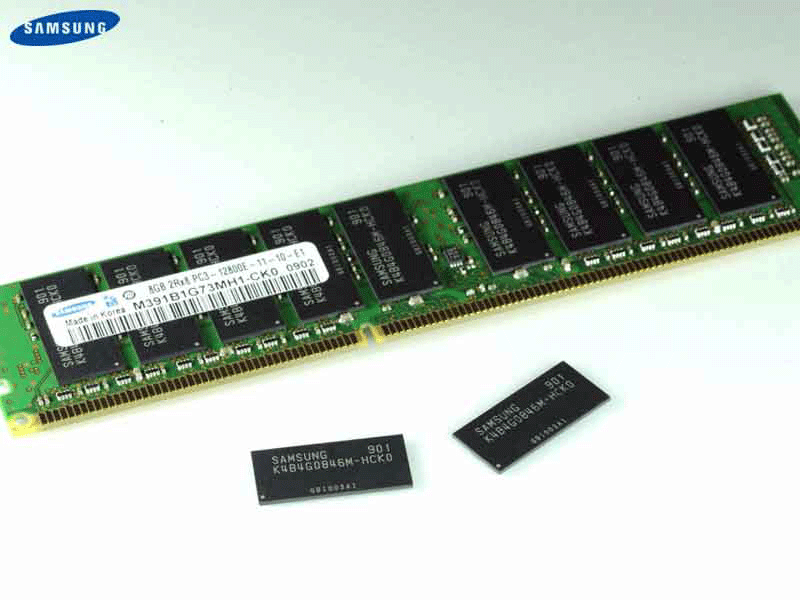DRAM Prices Continue to Trend Downward
The already fragile DRAM market continued to lose ground in the second half of October.
DRAMeXchange said that contract prices for 4GB DDR3 memory modules fell below $16 and there is no sign of a changing trend as the $15 mark is in sight.
At the time of this writing, the DRAM market exhibited severe volatility with spot prices of 4 Gb DDR3 1600 MHz chips ranging from $2.65 to $1.75. 2 Gb chips dropped as low as $0.80, while 1 Gb versions are selling for about $0.60. It is estimated that these prices are already below production cost and DRAM makers will have to react with production cuts beyond already announced cuts.
Last month, Nanya and Inotera said they are reducing their output by about 20 percent, while Elpida and Rexchip cut their production back in August. ProMOS has entirely abandoned the DRAM business. At this time, it does not appear that DRAM makers can hope that demand for PCs will pick up significantly until the second half of 2013.
IHS recently argued that the growth opportunity may be in DRAM for smartphones and tablets instead.
Contact Us for News Tips, Corrections and Feedback
Get Tom's Hardware's best news and in-depth reviews, straight to your inbox.

Wolfgang Gruener is an experienced professional in digital strategy and content, specializing in web strategy, content architecture, user experience, and applying AI in content operations within the insurtech industry. His previous roles include Director, Digital Strategy and Content Experience at American Eagle, Managing Editor at TG Daily, and contributing to publications like Tom's Guide and Tom's Hardware.
-
chewy1963 Here's hoping the industry as a whole doesn't over-correct. One well placed tsunami could cut the supply to the point we'd be scrambling for memory. My advice? Buy all the DRAM you can now!Reply -
abbadon_34 Looks like it time to go the RAM drive, how does 32 system 32 drive sound?Reply
Answer: A whole of fun and gluttonous space, just like the yesteryears's 1000W+ PSU's -
guardianangel42 chewy1963Here's hoping the industry as a whole doesn't over-correct. One well placed tsunami could cut the supply to the point we'd be scrambling for memory. My advice? Buy all the DRAM you can now!Reply
Never thought I'd see survivalist policy advocated with respect to PC hardware.
@The Article,
This is likely to continue regardless. With Windows 8 being more efficient with memory than Windows 7 and hardware's seemingly inexorable march toward more performance slowing, RAM purchases are bound to decline.
Until such time as we devise something to do with our computers that takes less power than hardware we have now can muster, this trend will only get worse.
Because I said so. -
RealJames Thanks Toms for posting an article that doesn't mention apple or idevices at all... what a breath of fresh air!Reply -
Robert Pankiw I hope this isn't a stupid question, but why would they sell below cost? Is it because no one is buying and they'd rather sell at a loss than not at all, or is it just that competitive? Not to sound like I am encouraging collusion, but why not simply refuse to sell below cost, there are still many millions of computers sold world wide each year, and every one needs RAM, so why agree to sell below cost?Reply -
vaughn2k Robert PankiwI hope this isn't a stupid question, but why would they sell below cost? Is it because no one is buying and they'd rather sell at a loss than not at all, or is it just that competitive? Not to sound like I am encouraging collusion, but why not simply refuse to sell below cost, there are still many millions of computers sold world wide each year, and every one needs RAM, so why agree to sell below cost?It is all about business and wastes.Reply
Have you ever heard about LEAN manufacturing? Waiting is waste, over production is waste, inventory is waste.
These companies rather sell their inventories in a very low prices (even less than assembly cost) rather than keep the inventories and loose more in the long run. -
monkeymonk Hmm seems like they were depending on windows 8 doing more to increase demand than it didReply -
greghome Hopefully, the decline in demand won't send most DRAM companies to bankruptcy or stop manufacturing RAMReply -
techcurious Robert PankiwNot to sound like I am encouraging collusion, but why not simply refuse to sell below cost?Although the idea seems simple enough, it is not. If a manufacturer (lets call it MEM1) decides to do this, they will only be helping their competitors who will be continuing to sell at the new higher prices thanks to the drop in supply that MEM1 created, while MEM1 takes in heavier losses thanks to the reasons explained by vaughn2k. And if MEM1 could convince all the other manufacturers to withhold shipments for a short period so they could all enjoy a rise in prices, they will all get dragged into court for conspiring to artificially inflate prices. Even if the new prices would be barely higher than production costs, I believe it would still be considered artificially inflated prices (someone correct me if I'm wrong..).Reply
The only way they could get out of this is for them to agree to actually close down factories to reduce output by all of them, or wait it out till the weakest manufacturers finally cave and drop out of the market (thus increasing demand for the remaining players), or dream about a substantial increase in demand.
